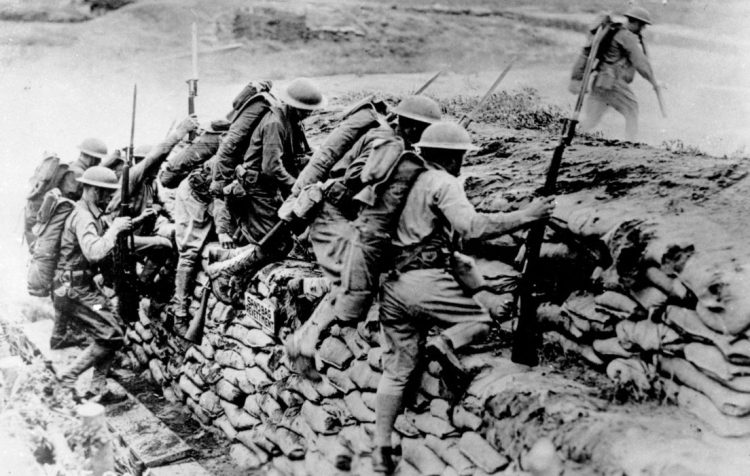Nov. 11, 1918, felt like the end of something. But when the guns finally went silent on the 11th hour of the 11th day of the 11th month exactly a century ago, it was only the beginning.
World War I seems like part of another era, and at the start it was. But between the firing of the first guns of August 1914 and the armistice of 1918, everything changed. War on a scale never seen and scarcely imagined before had given birth to the modern world. The scar tissue is still visible, 100 years later.
The soldiers who marched in 1914 did so with a 19th-century view of war, full of visions of adventure, derring-do and camaraderie. They wore brightly colored red and blue uniforms with soft hats. There were striking cavalry units with swords and gleaming metal breast plates almost indistinguishable from those that rode with Napoleon 100 years before.
Soon, though, soldiers would be wearing uniforms of drab greens and grays. They would have hard helmets and gas masks. In this new kind of war, there was no sitting around the campfire singing songs of home – long-range artillery made sure of that.
More importantly from our view a century later, World War I gave rise to the structures that would dominate the next 100 years of conflict – and counting.
The rising German Empire, of course, was shattered, only to rise again under Adolf Hitler, a veteran of World War I who was gassed in the trenches. Hitler tapped into the rage of Germans who felt their commanders had abandoned them by signing the Treaty of Versailles in 1919, and led his country on a war of revenge that surpassed World War I in death, destruction and cruelty.
Czarist Russia fell, too, ending 300 years of Romanov rule and ushering in the age of the Bolsheviks. The Soviet Union would play a key role in defeating Hitler and the Nazis, then face the United States in the Cold War for decades more before dissolving in 1991.
Centuries-old empires in Austria-Hungary and Turkey disintegrated, as well, with the fall of the Ottoman Empire giving rise to the new state of Iraq and the modern Middle East.
The Western powers that were divvying up the Middle East did so based not on geography or the histories of local populations but on the location of oil, which was quickly overtaking coal as the main source of fuel, another change accelerated by the war. The tension and grievances caused by the new borders destablized the region, and live on today.
No, when the bells rang on Nov. 11, 1918, that was only the beginning.
World War I had shown just how devastating modern warfare would be, to soldiers and citizens alike – but it would not be the “war to end all wars.” Instead, the victor’s peace of Versailles would lead to World War II. The devastation of war and the failure of old regimes would give rise to communism and fascism, and plant the seeds for conflict in the Middle East.
Finally, having played chief banker and supplier of the Allied war effort, the United States emerged from the war as a leading power, kicking off the American century.
The consequences of World War I are everywhere, even all these years later. In a newly global world, it was the first collective scream of mankind. And it still echoes today.
Send questions/comments to the editors.


